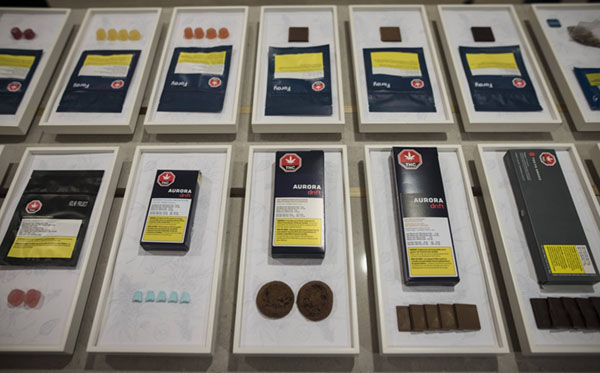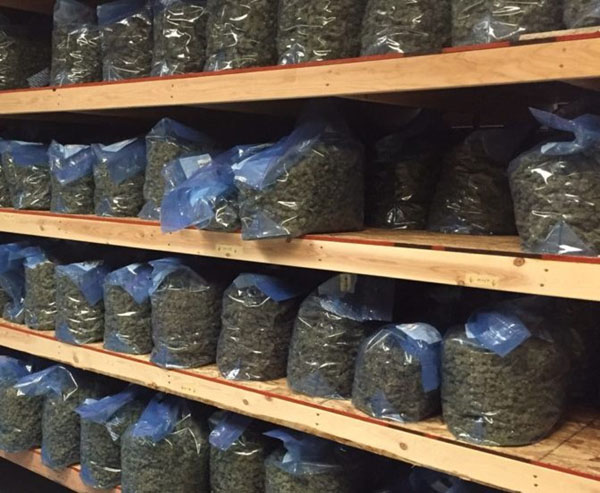In Canada the legal industry has reached a pivotal milestone, as spending on regulated cannabis outpaced the illicit market for the first time. In the second quarter of 2020, recreational sales jumped 74% year-on-year to reach $648 million, while unregulated cannabis sales slumped to an all time low. This signals a fundamental market shift as licensed producers destabilize the legacy competition, a key objective of cannabis legalization. The competitivity of legal cannabis has been enhanced through improved pricing, placement, and products, but often at the expense of profitability.
Initially licensed producers were restricted to flower sales, with large swathes of the cannabis industry left outside the regulatory framework. The flower that was grown was of low quality and marketed at a high price, which caused sluggish sales and missed revenue forecasts. In a bid to counteract low sales, many growers were forced to drop prices and develop cost friendly brands, selling ounces under $100.
Converting consumers

To increase revenues and disrupt markets dominated by illegal suppliers, edibles, concentrates and topicals were introduced to the recreational industry a year after legalization. With an estimated value of $2.7 billion, the products were expected to attract over three million new consumers through greater accessibility and more convenient consumption methods.
This increased accessibility was reinforced by an extended retail roll out, with a lack of retailers criticized as a distribution bottleneck. Government-run monopolies and license lotteries originally hindered legal sales, with just one store in Toronto on the first day of legalization and none in Vancouver until 2019. Today there are over 1,200 licensed stores nationwide, with inventories that almost rival the unregulated market. In Ontario, Canada’s most populace province, retailers open 40 locations every month. This intensifies competition in both regulated and unregulated cannabis retail, with profit margins squeezed as companies battle for market share.
The impact of increased competition has also been felt higher up the supply chain, with over 50 recreational growers operating in the lucrative flower market, which accounts for 71% of legal sales. The influx of licensed cultivators means more cannabis is grown than the market can consume, or that growers can process. To report low unit costs to attract investors, producers are willing to grow more cannabis than they can sell, with excess inventory diverted into extracts or written off entirely.
Hundreds of thousands of pounds of cannabis flower remain in grower’s facilities, with provincial warehouses stretched to capacity. The enormous stockpile is set to increase in the near future, as Croptober harvests are processed and packaged. The over-saturation of the market has seen prices drop significantly, with brands selling flower for 40% less than at the start of legalization. The sharp fall in price has enabled wholesalers to undercut mail-order delivery sites, with the average price of flower on the Ontario Cannabis Store website reduced to $7.05.
Cost of competition

While the price war presents opportunities for consumers, it creates obstacles for cultivators to remain competitive. Although the value of flower has dropped, many producers have struggled to reduce costs to protect profits. To stay ahead of both licensed and non-licensed competition, growers need to constantly streamline and enhance operations. To cut expenditure, companies must strategically analyze processes to identify cost savings can be made. When reviewing outgoings, growers should look to streamline the most resource-intensive tasks first. For many this is the crucial harvesting process, which usually involves a large workforce and high staffing costs.
Even in a micro-cultivation facility limited to 2,000 sq. ft, it would typically take 25 employees seven days to trim a 175 pound harvest. With a professional trimming team charging $200 per pound of flower, a single harvest could cost over $30,000. This demonstrates how expensive hand trimming cannabis can be, for even the smallest licensed operation.
By contrast, industry leading trimming machines can process 175 pounds of flower in under five hours, for a much smaller one-time investment. The best machines trim both wet and dry cannabis to replicate hand-trimmed flower, with superior efficiency and uniformity. Delivering the same cut at unrivalled speeds enables growers to simultaneously enhance quality and reduce costs, which empowers cultivators to outperform competitors.
In the face of increased competition and falling prices, automation allows growers to lower overheads and maintain profitability. Comparable price deflations have occurred in mature cannabis markets across the US, with prices plunging as much as 40% in Washington. Consequently, growers in emerging markets should look to the challenges faced in North America as a possible window to the future. Those that prepare for the future today, by continuously streamlining operations as they expand, will be better positioned to beat regulated and unregulated competition tomorrow.
As a supplier of harvesting automation solutions, CenturionPro is committed to continue servicing customers during the COVID-19 crisis. By doing so we hope to improve the automation of the world’s cannabis producers. Allowing them to meet the growing demand while still complying with government-imposed restrictions and recommendations. To speak with us about how to improve harvesting automation at your farm or facility, please contact us at info@cprosolutions.com or by phone at 1-855-535-0558 or 1.604.457.1101.
Need More Guidance?



